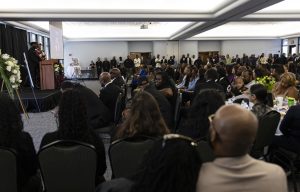Sacramento State professor and students discover toxins in Delta water
October 13, 2004
Six-year chemistry professor Susan Crawford, along with a handful of her students, has discovered potentially harmful toxins found in the Delta, which is a main source for Sacramento’s drinking water.
Along with this discovery, Crawford and her students are in the process of developing a way to naturally filter the water to make it safe to drink.
“When the natural organisms found in the Delta water are mixed with chlorine, which is the agent used to make it possible to drink the water, it creates toxins, like chloroform that, over a long period of time, can be harmful to your health,” Crawford said.
Crawford has discovered that natural porous organisms exist in the Delta called zeolites that may be able to act as filters to block out the organisms, which mix with chlorine to cause harmful pollutants in the water.
Along with the CSUS Geological Survey, Crawford is in the process of running experiments to see what exact organisms cause the toxins when mixed with chlorine. Also, she wants to see if the zeolites have the ability to filter out materials like oil, grease and metals before that water is drinkable.
Crawford and six of her graduate students are also working on trying to use the zeolites to filter out the hazardous materials found in storm water that runs into the Delta.
In collaboration with the Office of Water Programs, Sac State and her students, Crawford hopes to “eventually come up with a device or technology to inexpensively treat water quality issues,” like using the zeolites.
William Kerlin, Crawford’s chemistry graduate student, has been working on this storm water experiment for a while, devoting 30 hours a week trying to uncover a solution.
“I am testing for the ability of manufactured filters to get out materials from storm water through zeolites,” Kerlin said.
As for the work taking up too much time and effort, Kerlin really doesn’t mind.”I like it a lot,” Kerlin said. “I feel that the work I am doing can have a lot of applications to my future as a chemist.”
Crawford and company are currently in the testing stages, hoping to find a natural filter solution, but they have already begun getting media coverage.”People are beginning to think about it,” Crawford said. “It’s out there, and people are talking. It’s definitely something to think about.”
There is no need to be worried about the hazardous toxins immediately, for they take a long period of consummation before an effect can be seen.
Crawford has been interested in zeolites for a long time.
“They are essentially everywhere,” Crawford said. “They exist naturally and they are filters that can latch onto all the bad materials. They are like porous, molecular sponges.”
After teaching at both UC Davis and at Sac State, the students are most important to her.
“The students are great,” Crawford said. “They do so much of the work, and still stay energetic and excited. They are diverse, intelligent and always impress me.”
Crawford also feels the students at Sac State are better than those at UC Davis.”The student population is so much more interesting here,” Crawford said. “They all seem like real people, and that was just not the same at Davis.”
With the inventive ideas for natural filters, and a team of motivated students at her side, it seems as if this chemistry professor is very much in her zone.
























































































































